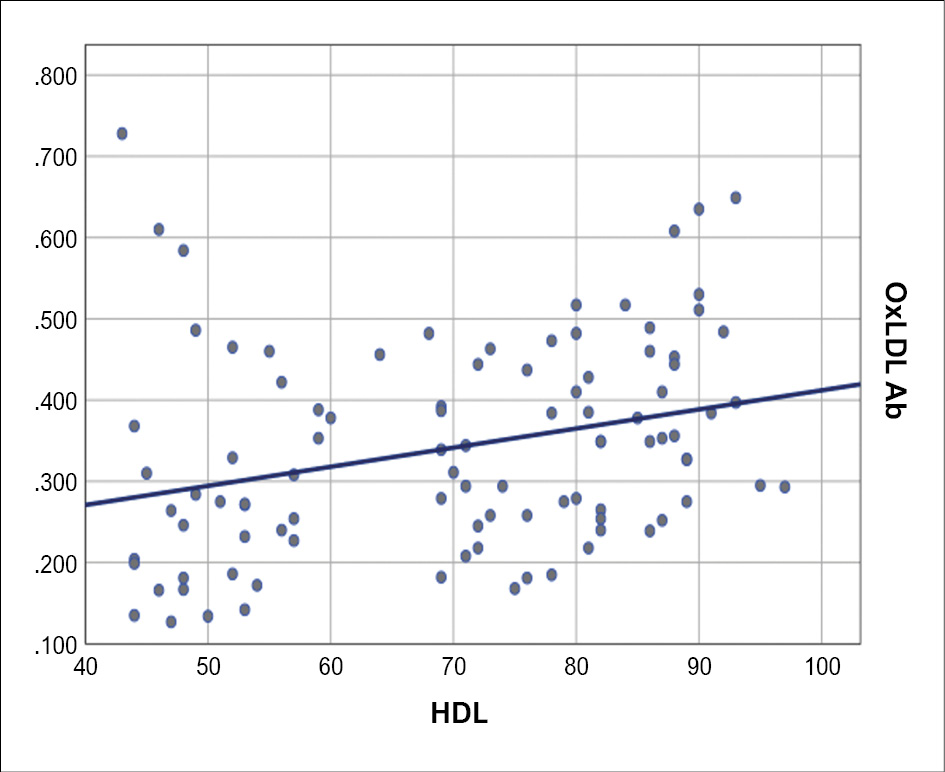Arq. Bras. Cardiol. 2022; 119(5): 714-721
Positive Association between Autoantibodies Against Oxidized LDL and HDL-C: A Novel Mechanism for HDL Cardioprotection?
This Original Article is referred by the Short Editorial "Antiinflammatory and Cardioprotective Effects of HDL-C: Association With Autoantibodies Against Oxidized LDL?".
Abstract
Background
In the atherosclerotic plaque microenvironment, oxidized phospholipids expressed in the oxidized low-density lipoprotein (oxLDL) surface bind to scavenger receptors of macrophages eliciting foam cell formation and plaque progression. Auto-antibodies against oxLDL (oxLDL-Ab) interact with oxidative epitopes leading to the formation of immune complexes that are unable to interact with macrophage receptors, thus abrogating atherogenesis. Release of oxLDL-Ab by B cells involves interleukin 5 and Th2 response, which in turn are potentiated by HDL. Thereby, we hypothesized that individuals with higher levels of HDL-C may plausibly display elevated titers of oxLDL-Ab.
Objective
To evaluate the relationship between HDL-C and oxLDL-Ab levels.
Methods
Asymptomatic individuals (n = 193) were grouped according to their HDL-C concentration to one of three categories: low (< 68 mg/dL), intermediate (68 to 80 mg/dL) or high (> 80 mg/dL). P values < 0.05 were considered statistically significant.
Results
Our analysis included 193 individuals (mean age: 47 years; male: 26.3%). Compared to individuals in the lowest HDL-C tertile, those in the highest tertile were older (36 versus 53 years; p = 0.001) and less frequently male (42.6% versus 20.9%; p = 0.001). Mean values of oxLDL-Ab increased as the HDL-C group escalated (0.31, 0.33 and 0.43 units, respectively; p = 0.001 for trend). Simple linear regression found a significant, positive relationship between the independent variable, HDL-C, and the dependent variable, oxLDL-Ab (R = 0.293; p = 0.009). This relation remained significant (R = 0.30; p = 0.044), after adjustment by covariates. Apolipoprotein AI levels were also related to oxLDL-Ab in both simple and adjusted linear regression models.
Conclusion
HDL-C and oxLDL-Ab are independently related.
Keywords: Atherosclerosis; Cholesterol, HDL; Lipoproteins, IDL
825

